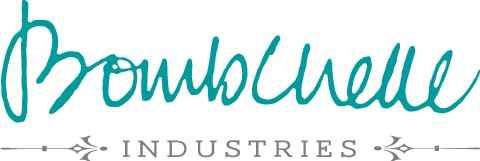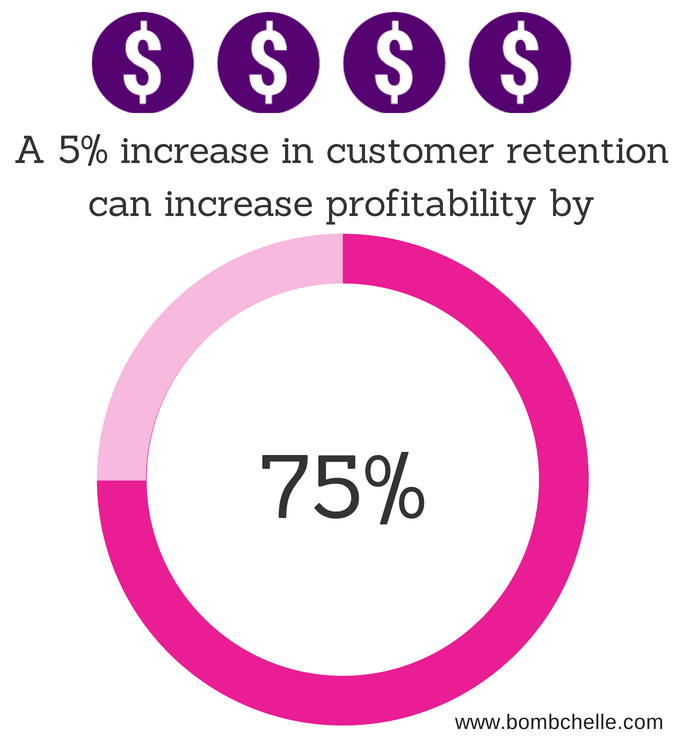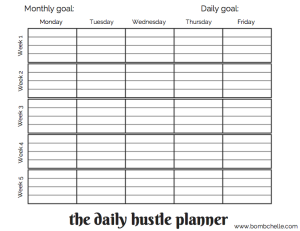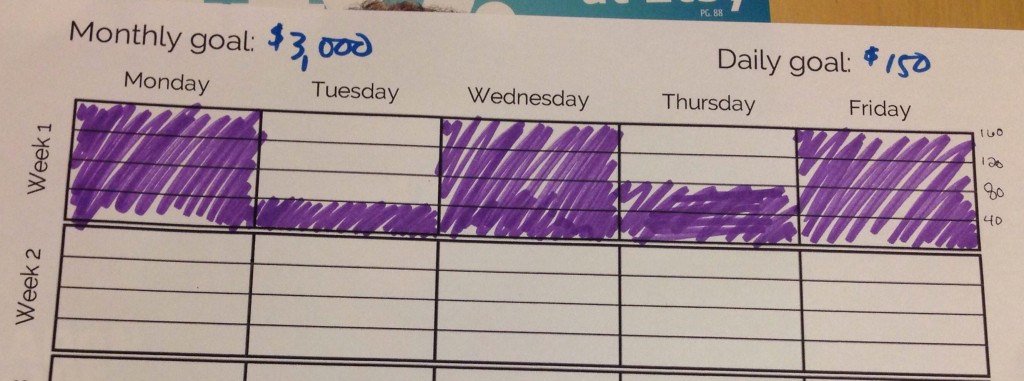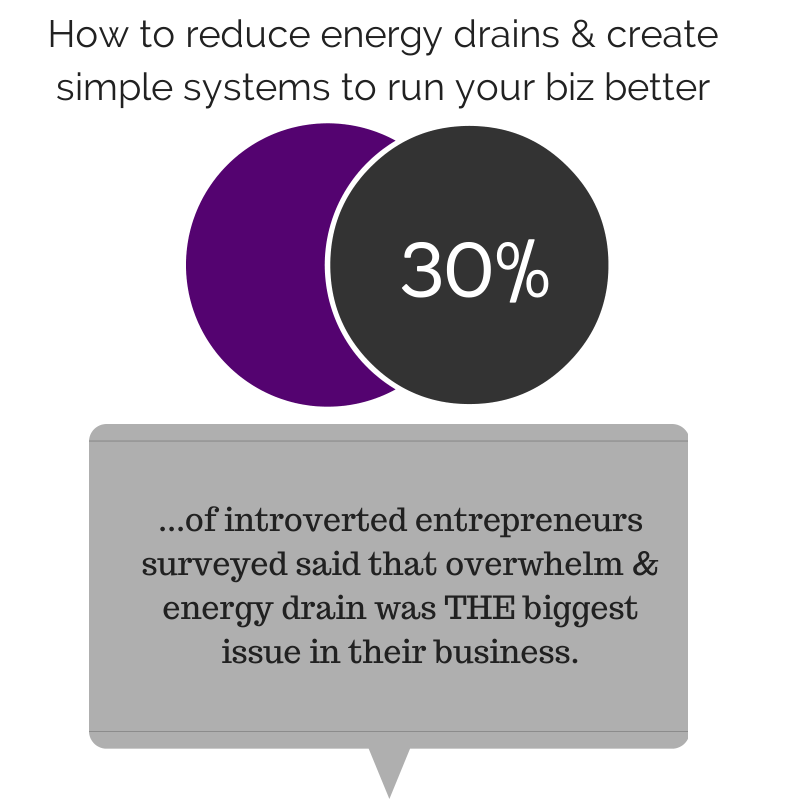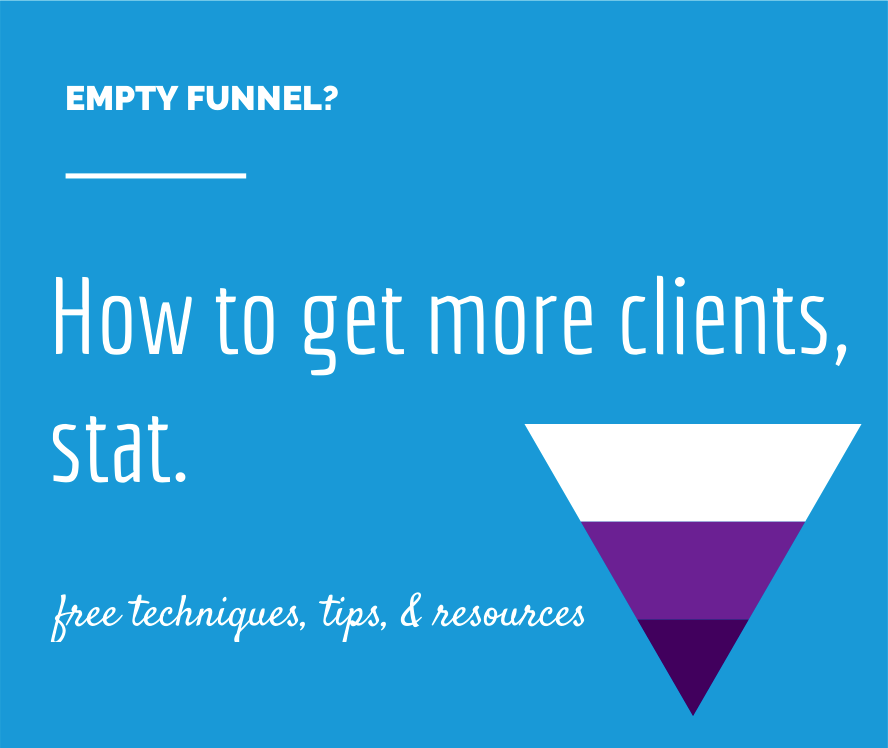Sixteen business owners sound off about how they avoid the summer slump

 This is the fourth post in the summer slump series – view all the posts & read the others here. In the other posts in the series, we’ve covered things from my point of view – but, as awesome as that point of view is (not that I’m biased or anything), it’s certainly not all-encompassing. For the last installment in the summer slump series, I wanted to get input from other business owners on what they do to avoid the summer slump and how it’s worked out for them. Below, you’ll find quotes from sixteen business owners across a variety of industries about exactly that. If you want to skip straight to my findings, you can click here for the TL;DR version! Love a particular piece of advice? Want to share it? Simply highlight it & you’ll get an easy-peasy share button for Twitter + Facebook, like so:
This is the fourth post in the summer slump series – view all the posts & read the others here. In the other posts in the series, we’ve covered things from my point of view – but, as awesome as that point of view is (not that I’m biased or anything), it’s certainly not all-encompassing. For the last installment in the summer slump series, I wanted to get input from other business owners on what they do to avoid the summer slump and how it’s worked out for them. Below, you’ll find quotes from sixteen business owners across a variety of industries about exactly that. If you want to skip straight to my findings, you can click here for the TL;DR version! Love a particular piece of advice? Want to share it? Simply highlight it & you’ll get an easy-peasy share button for Twitter + Facebook, like so: 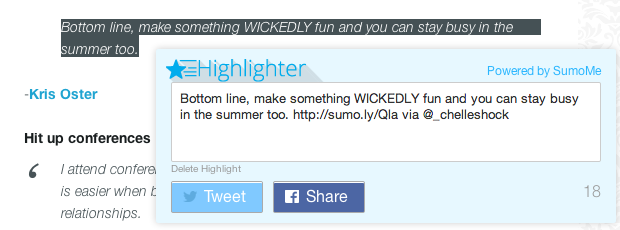
Get some downtime & experiment
I use summer to do more relaxing tasks, like review client portfolios, dream up new content, and design freebies. I just let this time be a time where I explore and experiment without obligation to commit to anything.
As a freelance writer, when assignments slow down in the summertime (many of the blogs I contribute to regularly cut down on the number of posts during summer) I take advantage of the (relative) lull to try something truly outrageous and eye-catching. In a few weeks, for instance, I plan to write a romance novel totally live on-line. I don’t mean I’m going to post a new installment a day and let people comment on it. I mean I am literally going to use software where you can watch me type each word; mistakes, revisions, deletions, missteps and all.
Refine your systems + follow up, follow up, follow up
From Laura George, a woman after my own heart:
I like to refine systems in the summer or implement time-consuming projects. That makes use of slump time pretty well. I also start the summer by following up with leads from previous months who have gone dormant. Sometimes they just need to be reminded that it’s been 6 months and they’re still in the same place and need the kick in the pants I can provide for them.
And of course, set up your follow up reminders (read more about that in the first post of this series):
Given that my clients are small businesses and nonprofits, I do see a little dip during the summer. I do follow-up continuously throughout the year using a task tickler called “follow-up.” Weekly, I send follow-up emails to anyone that I’ve met during the week reflecting on our conversation, providing information about my services and soliciting for referrals. Also weekly, I send personal handwritten thank you notes (with business cards) to anyone that I’ve met with. Again reflecting on our conversation, thanking them for their time and reminding them of my services. I’ve found that doing this weekly means that I’m not scrambling so much to book work. For my existing clients, I begin conversations around March about either expanding our current project to extend through the summer or creating a new project for the summer months. For my nonprofit clients, creating a content driven campaign has been critically important in keeping their work top of mind for their donors.
I definitely see a slow down in the summer for my business and my clients as well. Here are my tips:
- Mention to your clients that normally have slower summers and that you can use this time to work on their business development. Do they need to redo their website, increase their social media efforts, finalize that special offer someone gets when they signed up for their newsletter, etc. You can also work on these tasks as well. The key to making this work, though, is to have a plan and know what you are going to work on.
- Plan your holiday marketing. So many businesses do holiday promotions and come October go crazy trying to get it all done. Do it now and then just fine-tune closer to the holiday. You can increase sales substantially when you do this.
- Do more marketing for your business now. If you slow down in the summer, then it might be necessary to spend some extra money to ensure you reach a new audience.
Create great content
Slow periods are boner kills! I take that time to start creating great content that leads into my next launch – that way, when people come back I have their attention. Also, I try not to worry too much and enjoy the quiet time.
My business does get quieter in the summer months and for a period in December/early January. This summer, I’m hosting my first telesummit June 9-22 and it’s generating a lot of interest! It’s an online event where I interview 20+ top international experts on the nutritional solutions for anxiety, panic, social anxiety and OCD. Doing something like this is a great way to reach a large number of people (I have over 2500 attending already) from all over the world. It’s very exciting!
Have some fun with your clients!
I create really fun retreats and workshops, rather than serious business ones. It’s like a vacation, but actually productive in a roundabout way. I had one in early June called Sacred, Sassy and Sovereign. It’s a full day retreat, at a lower price point too. Hot tubbing and fun role playing using the Goddess archetypes in their brands. We even got a photographer to do headshots for everyone. Bottom line, make something WICKEDLY fun and you can stay busy in the summer too!
Get out there and meet people
Whether that’s by going to conferences:
I attend conferences and focus on in-person meetings over the summer. Travel is easier when business isn’t slammed and I get to build some quality relationships.
–Chrissy Das Or offering free checkups:
The first part of the year my firm prepares income taxes for educators and their families. It’s extremely busy and the customers have a deadline to get their taxes completed. The rest of the year our firm manages educators retirement accounts. The summer months can be difficult to get them to respond to your requests. So every summer we offer a free financial checkup – a quick 30 minute meeting where we get together to discuss how the year is going and to make suggestions to minimize their tax liabilities for the rest of the year. We also host free Educator Retirement Survival Boot camps. We provide a dinner and a short presentation to get the latest financial facts. We are also in the process of hosting bi-weekly webinars for educators around the country to attend.
–John Bustrum Or volunteering:
The best way to beat the summer slump is to focus on free marketing events to make your business relevant, even when the season has people distracted. My company focuses on personal branding and job readiness. Since many companies do not recruit as heavily in the summer months, my clientele tapers off. Instead of servicing clients, I use this time to volunteer my services and then use those as PR opportunities. I also reach out to new organizations that have summers off, but whose businesses pick up in the fall. It’s also important to attend summer networking mixers, as those are people in the community who are active and still looking to creative lasting partnerships.
Diversify your client base
My summer slump is a winter slump. [Note: to read about what I’m doing to avoid my winter slump, check out the profitable planning post earlier in this series.] New consulting projects are slow to start and no one seems to be in their office when I call. After suffering through that period in my first year in business, I took a three pronged approach to avoid future slumps:
- I target industries that are traditionally busy in that timeframe (such as retail with big holiday sales efforts)
- During the early summer, when coffers were flush, I talked to the bank about a working line of credit (very small at first while I establish a track record). Having a relationship with my local community bank manager before I need her makes us both happy.
- A personal mind-shift. I’m convinced that if I keep asking myself the question “How can I insure that my slowest season is my most worry free season?” my brain will figure out a way to make it so.
The printing business definitely has a summer slump, and it’s pretty substantial. We plan for and take advantage of our summer slump by taking the time to work ON the business. When business is busy, we don’t have time for planning, strategizing, marketing plans, etc. because we’re too busy and working IN the business. During the summer months when we know we will be slow, we are able to look at what products we want to add to our offerings, pricing structures, marketing calendars, the website, social media marketing, email marketing, print marketing, head count, and so much more. We experience the same sort of slump in November and December when people are focused on the holidays. Business usually picks back up again in January and we’re ready for it because we’ve planned ahead, we don’t panic, we keep marketing and building relationships and we’re able to take a little more time than when it’s super busy. For the holiday seasons slump, we’ve also taken a look at what we can do different in our business to attract more consumer type clients for holiday printing. Our typical customers are small business owners, not consumers. Our business didn’t slump as much in 2013 for the holiday season because we added more products directed at helping our clients as “consumers.” They already know and like us, we just needed to have them see us in a different light so they realize we aren’t just “small business printing,” we can do anything printing related, including helping them with their holiday cards. The shift made a big difference in the way we ended 2013 and we expect it to be even better this year.
In my photography business, winters have typically been the slump time. People want more outdoor “lifestyle” type of portraits and usually brides have feared the snow. The latter is starting to change a bit and I’ve booked at least two December weddings each year for the last three years. But two weddings does not a slump-buster make. There are a few ways I feed the monster so that there really isn’t ever any down time. First off, a few years ago I started making serious pushes into other types of photography, including product and architecture. Today these two areas actually are my bread and butter, despite my primary reputation for portraits and events. The next thing I do is to continually be networking and selling myself. A great deal of people don’t realize how they could use my services until I point out that they may want to update their LinkedIn profile, or add imagery of their retail space on their website, etc. This usually doesn’t yield immediate business, but a few weeks or months down the road I usually get a call. Last but not least, when heading into winter I email a discount on prints to all my portrait and event clients, which is a good money maker. So in short, look for one or two steady clients that aren’t necessarily in your wheel house. Always have a card on hand and your elevator speech ready, and try to make one new contact a day. Lastly, don’t neglect your previous clients.
Revisit your purpose
In downtime, I think it is best to revisit your systems and purpose. Systemizing means asking yourself, “What do I like to do? What don’t I like to do? What can I do better? What do my customers want me to do/to do better?” When you answer this, you can have a better idea how to guide your work, areas you may want to outsource or hire an assistant for, and what to develop your skills in. I mention purpose because freelancing is not easy. This is especially relevant in slow times, when you aren’t so sure of your earnings for the upcoming months. Ask yourself, “why do I do what I do?” You have to be honest with yourself as to why you are freelancing. It can be a lonely and emotionally stressful endeavor to be self-employed. Reconnecting with your life vision and purpose allows you to have something to go back to during trying times. And of course, being open to adjusting your vision allows for great insight on yourself.
Book ahead of time & learn more
Summer is notoriously slow for many travel agents. I use this time to encourage clients to encourage people to book for the future so they can take advantage of early bird booking rates and extended free layaway programs. If we’re not booking, we’re marketing or fine tuning our websites and participating in industry education. There are always new classes to take, new resorts to preview. We actually need a break so that we can continue to expand and update our industry knowledge. Personal growth in the travel genre is critical to our business success.
Notice a pattern?
Out of the nearly 50 responses I got from business owners about how they avoid the summer slump (not all of which are posted here), they tended to fall into a few very noticeable categories. The first two categories are:
- discounts/sales
- saving money
Obviously, both of these can work, but discounts works best with products (doing it too often or with too much of a discount with services can devalue your services and leave you overworked and resenting your clients, which is not an ideal place to be). Saving money is smart, but is definitely a very long term strategy in my experience. That’s why I didn’t put a huge focus on either of those tactics in this article.
The other categories were:
- planning ahead
- client & lead follow up
Which are topics extensively covered in my products. The last category that emerged was planning your marketing for the future, with many business owners mentioning content marketing specifically. And once again, I’ve got something that can help – check out the guest posting to rock your biz class.
